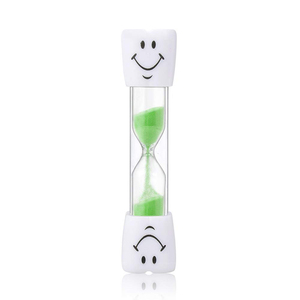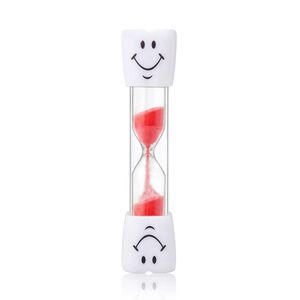
All categories
Featured selections
Trade Assurance
Buyer Central
Help Center
Get the app
Become a supplier

(4179 products available)




















































A 2 minute timer is a tool used to measure the passage of time. It becomes especially relevant in activities that take or are expected to take 2 minutes. For example, brushing teeth is supposed to take 2 minutes to ensure good dental hygiene. In cooking, it can be used for boiling eggs or making teas that take 2 minutes. It is also crucial in games to ensure one completes a move within the stipulated time. There are several types of timers ranging from digital to mechanical. They include:
Digital timer
A digital timer counts down numbers to indicate the passage of time. It usually displays numbers in two or more digits. The digits can be displayed in various formats, including 7-segment LED displays, LCD displays, or even on computer screens. They emit a loud beep or a series of beeps when the set time elapses. Some digital timers are programmable. They are easy to read and use, making them suitable for various applications, including cooking, sports, and educational settings.
Mechanical timer
As the name suggests, a mechanical timer is a timer that works mechanically. It uses gears, springs, and levers to measure the passage of time and produce an audible alarm. These components work together to ensure the timer runs smoothly and accurately. Mechanical timers are generally more durable than their electronic counterparts. They are less prone to damage from physical shocks or spills. Mechanical timers do not rely on batteries or electricity to function. They are ideal for use in situations where power sources are limited or unavailable.
Egg timer
Egg timers are specifically designed for boiling eggs. They come in various designs, including mechanical timers that use sand or liquid to measure 2 minutes and digital egg timers that count down from 2 minutes to zero to indicate when the time is up.
Interval timer
Interval timers are digital timers that can be programmed for specific intervals. For instance, one can set an interval of 2 minutes. They are useful for workouts, cooking, and other activities that require repeated cycles of work and rest.
Count-up timer
As the name suggests, a countdown timer counts up from zero. It can be set to count up to 2 minutes or used to count up to measure time in an activity. Count-up timers are useful in games and sports.
Hourglass timer
Hourglass timers use glass vials to measure the passage of time. They work by allowing sand to flow from the top vial to the bottom one. Hourglasses are usually decorative pieces that can be used to time activities like speeches and games.
Multi timer
A multi-timer is a digital device with multiple countdown timer functions. Each timer can be set and operated independently. Multi-timers are useful in kitchens, laboratories, and other settings where multiple tasks need to be timed simultaneously.
The design of the timers is diverse, ranging from minimalistic and sleek aesthetics to vibrant and playful styles. This variety ensures that timers can complement any setting or individual preference.
Shape:
Two-minute timers come in many forms. The digital kind can be rectangular, round, or square. They often have simple and modern designs. Mechanical timers usually take the shape of hourglasses, clocks, or simple cylinders. They are designed to be easy to read and use.
Color Options:
Digital timers offer many color choices. Users can select the timer's display color to match their preferences or environment. Mechanical timers also have color choices. They can be white, black, or bright colors to stand out and be noticed.
Display:
Digital timers have easy-to-read LCD or LED screens. These displays show the remaining time clearly. Mechanical timers usually have analog displays with large, visible numbers and hands.
Buttons:
Digital timers have touch-sensitive interfaces or physical buttons for setting and starting the timer. Mechanical timers typically have a winding knob to set the time and a button to start the countdown.
Special Features:
Some digital 2-minute timers have customizable features, like changing alarm sounds. Some mechanical timers have unique designs, like sand timers that visually represent the countdown.
In diverse fields and activities, the 2-minute timer has many practical applications. The timer is a useful tool in cooking and food preparation. It helps to keep track of cooking times for specific dishes, reminders for stir or flip, and timing of short cooking activities like boiling eggs or making tea. In exercise and fitness, the timer is used to time workouts, intervals, and rests. It is beneficial for high-intensity interval training (hiit) and short exercises that take two minutes or less. The timer can help improve productivity and time management in many tasks.
In the classroom, the timer can be used for timed quizzes, short tests, and activities. It can also help maintain discipline and manage time. The timer can be used in games and sports to set match times, rounds, and intervals, and to give time limits for moves or actions. The timer is also helpful in many professional activities. For instance, in music, it can be used to time practice sessions, in music composition to limit song durations, and in performance to set act durations. It is also used in many medical applications, such as in surgeries to time procedures and in medication to time dosages.
In daily life, the timer is used in many activities. It is helpful in brushing teeth, doing laundry, and many more. The timer can help improve meditation sessions and mindfulness exercises to achieve better mental peace and focus. The timer can also be used in many creative activities. It is used in writing to set word count goals and to limit writing sessions, in arts and crafts to manage project times, and in photography to limit photo shoots.
When selecting a 2-minute timer, certain key features and aspects need to be considered to ensure that the timer meets the specific requirements and is suitable for the intended use. First and foremost, the design and visibility of the timer should be considered. The display of the timer should be large and easy to read, with clear digits so that time can be seen easily. For timers that will be used in dimly lit or dark environments, a backlit display or contrasting colors becomes important. Secondly, the audio alerts and notifications of the timer need to be examined. The alarm or alert at the end of the countdown should be loud enough to be heard over background noise, and it should also have adjustable volume levels if necessary. In some cases, multiple alerts may be required, such as vibrating alerts for personal use or visual notifications for group settings. Another important feature to look out for when choosing a 2-minute timer is its ease of use and functionality. The buttons on the timer must be easy to operate, preferably with tactile feedback, so they can be pressed even when one's eyes are not on them. Additionally, features like preset timers, lap timing, and memory functions can enhance the convenience and usability of the timer.
Moreover, the construction quality and durability of the timer should also be considered, especially when it is going to be used in demanding environments or carried around frequently. It should have impact-resistant and water-resistant properties to withstand accidental drops or splashes. Furthermore, the battery life and power source used by the timer need to be taken into consideration. If it is a battery-powered timer, rechargeable batteries will be more convenient for long-term use. On the other hand, if it uses replaceable batteries, one should ensure that they are easily accessible. Finally, the additional features that come with a 2-minute timer should be considered, like the ability to mount it on walls or clip it onto clothing, as well as the presence of multiple timer modes, stopwatch functions, and backlight options.
Q1: How can a 2-minute timer be reset?
A1: Most digital timers can be reset by pressing the “reset” button once. The timer will return to its original state. Some timers may require a long press on the reset button. Manual timers can be reset by turning the clock hands back to the original position.
Q2: How to change the timer from minutes to seconds?
A2: To change the timer from minutes to seconds, look for the mode button on the timer. Press the mode button until the timer displays seconds. Release the button to start the countdown.
Q3: How to turn off a 2-minute timer?
A3: To turn off a timer, press any button on the timer. Some timer models will stop the countdown and reset the timer when a button is pressed. In some models, the alarm will ring, and the timer will stop after the set time.
Q4: How to set an online 2-minute timer?
A4: To set an online 2-minute timer, go to a timer website. Find the timer section, and choose the 2-minute timer. Start the countdown by pressing the start button.
Q5: Can a 2-minute timer be used in a game?
A5: A 2-minute timer can be used in many games to limit playtime. It can be used to limit each player's turn in board games. It can also be used to limit the total time in card games. A 2-minute timer can also be used in sports to limit rounds.